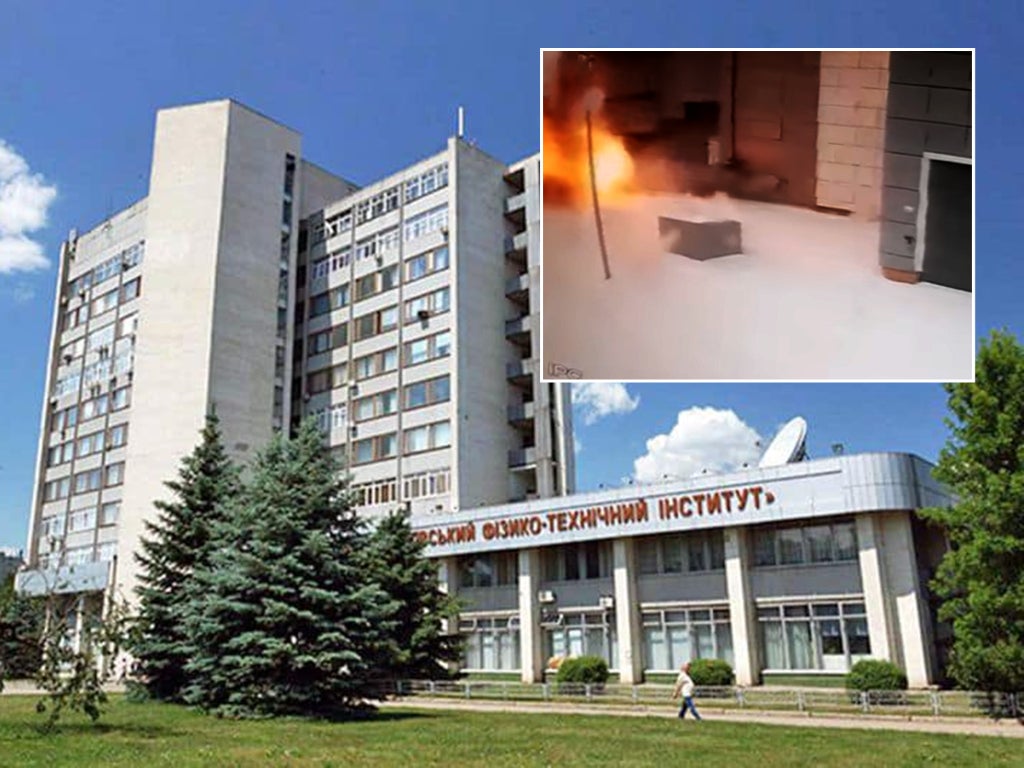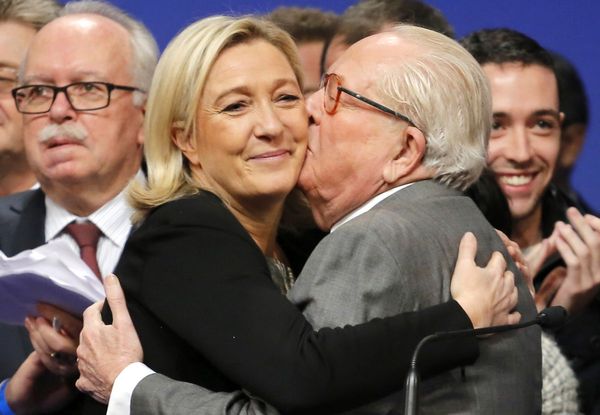
Russian forces have fired rockets at a physics institute in Kharkiv, which contains nuclear material and a reactor, Ukraine's national security service has claimed.
The strike on the nuclear facility comes on the eleventh day of the invasion and the security service said it risks a “large-scale ecological disaster”.
It claimed that Moscow’s forces are firing missiles from truck-mounted “Grad” launchers, which do not have precise targeting, raising concerns that one would go astray.
The Kharkiv Institute of Physics and Technology houses a nuclear research facility called Neutron Source, in the active zone of which 37 nuclear fuel cells are said to be loaded.
Footage published by Ukraine’s ministry of internal affairs on Facebook showed blasts hitting a building – supposedly at the Kharkiv institute – but there was no immediate reports of any damage to the nuclear materials inside.
Criticising the alleged attack, Ukraine’s first deputy minister of foreign affairs Emine Dzheppar said Ukraine “continues to collect evidence of [Russian] war crimes for the Hague” – a reference to the investigation opened by the International Criminal Court this week.
Follow live updates on Russia’s invasion of Ukraine
It comes just days after a fire broke out at Europe’s largest nuclear power plant while it was captured by Russian troops.
Washington’s ambassador told United Nations delegates the following day that, “by the grace of God”, the world had “narrowly averted a nuclear catastrophe” at the Zaporizhzhia site.
Commending the plant’s Ukrainian operators for their ability to keep the plant’s reactors in a “safe condition” while under attack, Linda Thomas-Greenfield warned the UN on Friday that Moscow’s forces were only 20 miles away from Ukraine’s second-largest nuclear plant, in Yuzhnoukrainsk.
Ukraine’s president Volodymyr Zelensky has also warned that Russian troops – having also seized Chernobyl – are advancing on the third nuclear plant.
Addressing US senators on Saturday, Mr Zelensky said that while Vladimir Putin’s forces have taken their first major city in Kherson and have encircled Kharkiv, Mykolaiv, Chernihiv and Sumy, Ukraine was “inflicting losses on the occupants they could not see in their worst nightmare”.
In a further video address on Sunday, as a second ceasefire attempt aimed at a mass evacuation of civilians in the heavily bombarded city of Mariupol failed, Mr Zelensky reiterated his demand for a no-fly zone over Ukraine – a demand Nato has so far has ruled out.
In another warning to the West on Saturday, Mr Putin said that any attempt to impose a no-fly zone in Ukraine would be tantamount to entering the conflict, and said Western sanctions on Russia were akin to a declaration of war. “But thank God it has not come to that,” Mr Putin said.
The Kremlin said on Sunday that Mr Putin had told his Turkish counterpart Recep Tayyip Erdogan that Russia’s military action in Ukraine could be halted “only if Kyiv ceases hostilities and fulfils the well-known demands of Russia”.
In the wake of the fire at the Zaporizhzhia plant, experts said that the shelling had been unlikely to trigger a Chernobyl-style nuclear disaster.
Malcolm Grimston, an honorary senior research fellow at Imperial College London’s centre for energy policy and technology, said: “If one wanted to destroy a nuclear power station, which in itself will be an enormous task, the level of artillery that will be necessary would just be of a different order from what we were seeing last night.
“So it’s much more consistent at least at this stage with them wanting to take a facility that happened to be a nuclear facility in that area, but not to cause a radiological incident.”
He added: “These power stations are an enormous asset; Ukraine gets more than half of its electricity from nuclear power.
“You would expect the Russians to want to maintain that because if they’re going to run it as part of Russia, it will still need energy.”
Dr Patricia Lewis, director of the international security programme at Chatham House, said the shelling of the plant could have been an accident or a scare tactic.
“It could be just what happens in war, where you have a lot of firing and one of the shells goes into a building that it wasn’t intended to go into. It could be trying to scare everybody, and a deliberate attack on that particular building.
“It went on fire, but there was no radioactive material in there, but it’s a reminder of what could happen if they decided to attack a different part of the power station. Clearly we’re not dealing with people that we would interpret as rational and certainly not ones who care two figs about the people of Ukraine or even their own people.”
Last weekend, the International Atomic Energy Agency (IAEA) said that Ukrainian inspectors had informed them that an electrical transformer at a low-level radioactive waste disposal site near Kharkiv had been damaged, but no release of radioactive material was reported.
The facility allegedly attacked on Sunday was known formerly as the Ukrainian Institute of Physics and Technology, where scientists are said to have made discoveries which were important in enabling the Soviet Union to develop atomic bombs.
When the new nuclear facility was unveiled in 2014, Kharkiv authorities were reported to have said the nuclear facility would provide Ukraine with new research opportunities and the ability to produce isotopes, primarily for the diagnosis and treatment of cancer.
Additional reporting by agencies







